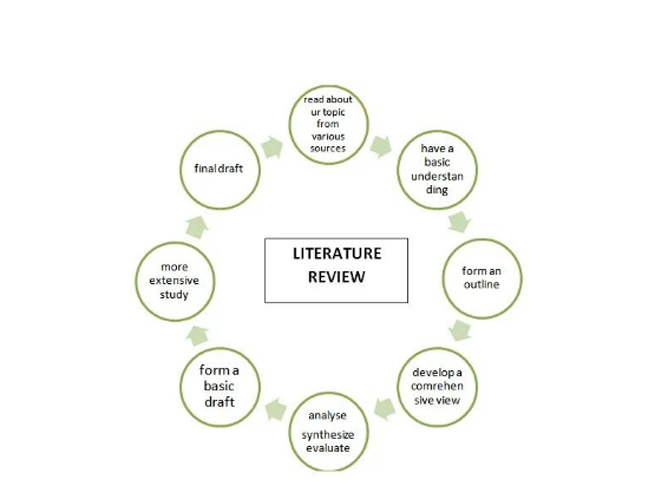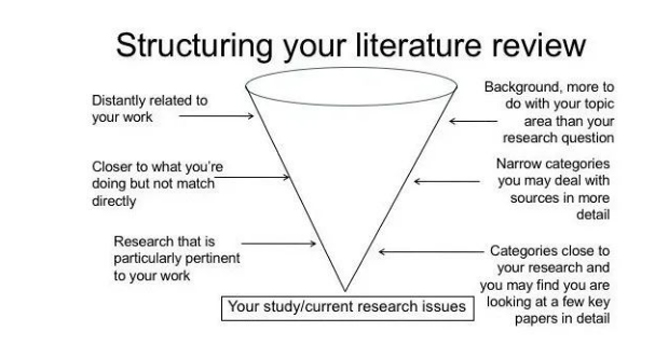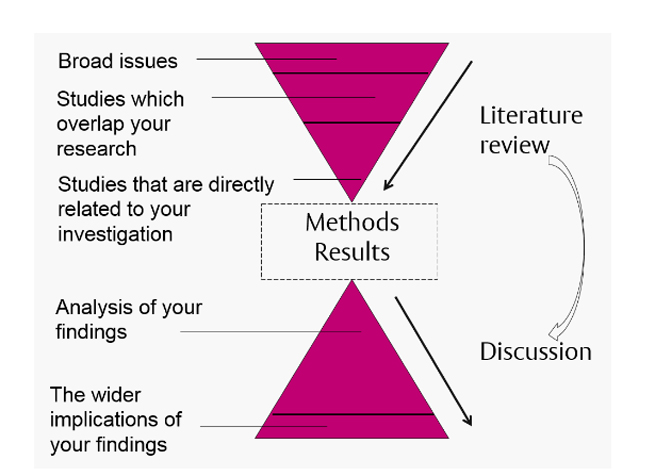
文献综述是研究过程中不可或缺的一部分,它有助于构建研究的理论框架、明确研究问题、提供背景知识、指导研究方向,并加强研究的可信度和说服力。
每篇文章必不可少的Literature Review为读者提供当前知识的概述,确定相关的理论,方法,还有研究的差距。
展现你对主题和学术背景的熟悉程度
为你的研究制定理论框架和方法论
将自己和其他研究人员的关系定位好
展示你的论文如何解决差距或促进辩论
趋势和模式(理论上、方法或结果): 随着时间的推移,某些方法会越来越受欢迎还是越来越不受欢迎?
主题:哪些问题或概念在文献中反复出现?
争论、冲突和矛盾:消息来源哪里不同意?
关键出版物:是否有任何有影响力的理论或研究改变了该领域的方向?
差距:文献中缺少什么?是否存在需要解决的弱点?

跟其他学术文章一样,文献综述应该要有
引言+正文+结论
引入研究主题:简要介绍你要讨论的研究主题或问题,为读者提供背景信息。
目的和重要性:说明为什么文献综述在研究中具有重要性,概述你的研究目的和目标。
结构导向:提供文献综述的整体结构,告诉读者可以期待什么内容。

Topic Sentence主題句:
Many theories have been proposed to explain what .... Although the literature covers a wide variety of such theories, this review will focus on .... major themes which emerge repeatedly throughout the literature reviewed.
Scope 範圍:
These themes are…,….,…..,….,.
Background研究背景:
Some authors have driven the further development of __
This has been discussed by a great number of authors in literature.
For example, research has provided evidence for __
Thesis Statement論文聲明:
Although the literature presents these themes in a variety of contexts, this paper will primarily focus on ....

主题分类:将相关文献按照主题或类别进行分类,这有助于组织综述的结构。你可以按照不同主题或概念来组织段落。
文献综述:在每个主题或类别下,对相关文献进行综述。这包括文献的概要、方法、结果和重要发现。你可以按时间顺序或重要性来排列文献。
文献之间的关系:在不同文献之间建立联系,说明它们如何相互关联或对研究主题产生影响。
分析和评估:对每个文献进行分析和评估,包括其方法的有效性、结果的可信度以及对研究问题的贡献。你可以使用比较和对比来强调不同研究之间的异同点。

Topic Sentence主題句:
Researchers generally state .... theory is true but differ on its effects. There seems to be general agreement on this theory,
Supporting Evidence 支持性证据:
(for example, White(1987), Brown (1980), Black (1978), Green 1975)
Student Analysis 学生分析:
but Green (1975) sees .... as a consequence of ... while Black(1978) .... While Green's work has some limitations in that it fails to consider other circumstances, its main value lies in the fact it inspired further studies in this field.
Sum up and link to next idea 總結並且連結到下一個想法:
This early research .... then led to more specialised research on its effects in the 1990s.

概括关键发现:总结文献综述中的关键发现和重要观点,强调与研究问题相关的内容。
知识差距:指出文献中可能存在的知识差距或未解决的问题,为你的研究提供合理性和动机。
引出下一步:提出可能的研究方向或建议,说明你的研究将如何填补文献中的空白或为领域做出贡献。

Summarise main ideas 总结主要想法:
In conclusion, Cacioppo and Waters – Marsh (1998) and Shaw, Shapard and Waugman (2000) all agree that ..... is important but disagree on..... Shaw et al. (2000) studied this area and gave the opinion that it varies according to circumstances.
Evaluate评价:
However, all the research done has failed to fully evaluate.....
Writer's view 作者的看法(你的看法):
Therefore, while the literature provides many answers to ...., more is needed to give a clear idea of what can cause it.




